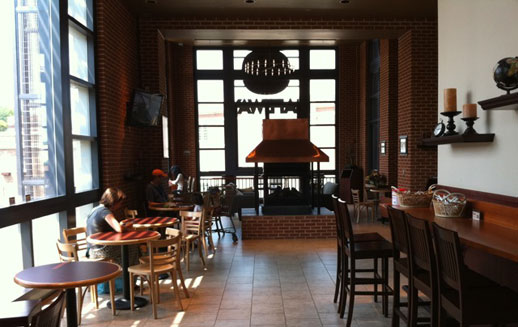Remixing the supermarket

The first thought may be when looking at this photo may be, ‘So what, it’s a Safeway!’ But there’s more to the story here from both a placemaking and local independent retail point of view. It’s about a shifting of priorities for large companies, prioritizing people and community over cars and product.
Placemaking: What used to be on this site was your typical single story Safeway with a large surface parking lot in front of it, like you see in suburbia. The problem was, this is located in Georgetown, one of the most urban (and historic) neighborhoods in Washington DC. The parking lot is now located in the rear of the building as a two-story parking garage.
Local independent retail: But it’s still a Safeway right? Not on the ground floor it’s not. The Safeway is actually only on the second floor. Guess what’s on the first floor? Local independent shops.
Green: Designed to be the first LEED certified supermarket in DC, and the second for Safeway (the first is in Santa Cruz, CA).
Social: The prior store was known by residents as the ‘social Safeway’, and the new one improves on that theme, open 24 hours/7 days a week featuring huge windows where the previous one had none. Even the second story of the building’s corner piece serves as a public lounge (pictured below), with the option of being open to the outside in warmer months.
One intriguing note. In a Washington Post article, architecture critic Roger K. Lewis states, “This new building may not win design awards, but it deserves recognition for what it has aspired to achieve urbanistically and architecturally.” Maybe one of these days, that will be the underlying criteria for architecture design awards versus its icon status.
Back to supermarkets, of course, there’s always the community-oriented alternative to the Safeway…
Would you shop here? If not, what would you prefer?
Photo above by Jim_malone. Photo below courtesy of Cooltown.


This type of development is also taking place near the Olympic Village in Vancouver. There is a Home Depot on the second floor above local retail with 2 floors of residential condos above the Home Depot. For placemaking in an urban setting such as this as well as supporting local retail, I found it to be very successful.
Cool story. I wonder if the ‘social’ nomenclature will stick. ‘We could sure use a social grocery store in this neighborhood’